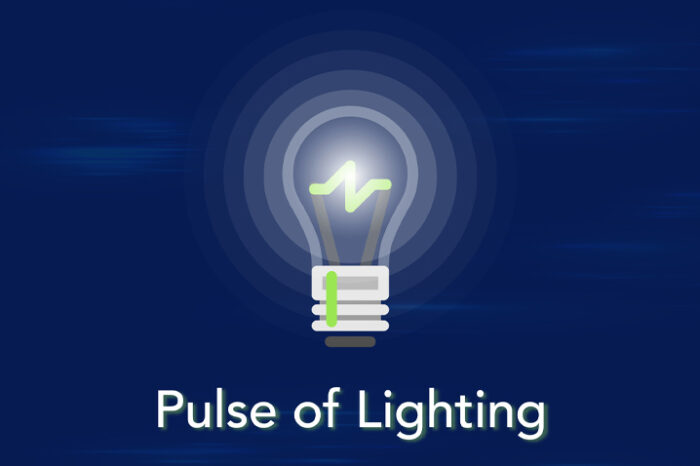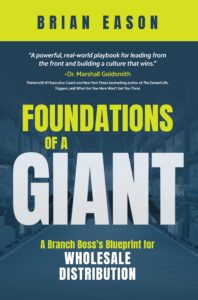8 Questions to Cooper Lighting’s Eric Jerger
As the Q2 Pulse of Lighting report highlighted, the the lighting market is experiencing slow / no growth and, for some companies, is contracting. In fact, the second half outlook points to a contraction.
However, it remains a large component of industry sales and trying to continue to grow at the rate of the past two years is somewhat unrealistic.
Given the lighting market size (and we’ve calculated it for manufacturers), there is opportunity.
As many knows, US Lighting Trends is a service / publication of Channel Marketing Group in collaboration with Kerrwil Communications, which also publishes Lighting Design and Specification in Canada.
Recently we published an article / interview with Eric Jerger, VP/GM, Business Segments & Customer Experience, from Cooper Lighting Solutions and asked him 8 key questions.
Topics included:
- Thoughts on top 3 lighting trends affecting electrical contractors
- Top 3 trends that could benefit lighting specifiers and designers
- Key trends in the commercial construction lighting market
- How specifiers could work closer with Cooper Lighting to generate demand for both.
- Market segments and opportunities for 3D printing
- Opportunities in the second half of 2023
- State of lighting controls and what is inhibiting greater / faster adoption
- “Why Cooper Lighting Solutions?”
Here’s his input on the first four questions:
 USLT: What does Cooper Lighting see as the top 3 lighting trends affecting electrical contractors?
USLT: What does Cooper Lighting see as the top 3 lighting trends affecting electrical contractors?
Eric Jerger: First of all, labor shortages abound. Our rapid-install and spec products, expedited shipping services, and anything that saves labor hours is very popular right now.
Second, flexible products are needed for SKU optimization & logistical challenges mitigation, such as our Selectable products (lumen and color) and our MarketPro & QuickShip programs.
Third, SIMPLE, scalable, and secure commissioning for wireless controls is a must going forward, like our WaveLinx connected lighting system, for example. Of course, everything must meet or exceed energy code requirements.
USLT: What does Cooper Lighting see as the top 3 trends that could benefit lighting specifiers and designers?
EJ: First, there’s a growing awareness of the impact a building’s environment has on occupants’ health, well-being, and satisfaction. There’s also a need to design more collaborative spaces rather than just workspaces. Lighting has historically been used to meet the visual needs of occupants, but it hasn’t considered circadian and mental health needs.
Today’s lighting and controls technologies allow you to design cost-effective spaces that accommodate circadian cycles, customize the lighting condition, reinvent and redefine the layers of light that can improve occupants’ health and well-being. Advanced lighting controls help lighting specifiers/designers meet the challenges of Light and Health, along with better moods, with Human Centric/Integrative Lighting, as well as the customization of the space.
Second, the product selection is a critical portion of the lighting solution. Certain products may look attractive at the initial purchase price, but will fall to the wayside when researching the total installation cost, optical performance, quality of light, lifetime ratings, ease of installation, serviceability, and energy efficiency. With proper luminaire selection, lighting specifiers/designers can reduce the number of luminaires required for the space, reduce installation time, reduce the amount of energy consumed over time, and reduce the cost to service existing luminaries rather than having to purchase a full new fixture if a failure occurs within the expected lifetime of the product.
Third, sustainability is trending as several global initiatives and challenges have been issued by multiple organizations. Carbon footprints, embodied carbon, and material transparency are being discussed within the lighting industry with several lighting specifiers/designers leading the conversation. Education on these topics is appearing in multiple forums and companies like Cooper Lighting Solutions (as part of global lighting leader Signify) are helping raise awareness of these sustainability initiatives.

USLT: The new commercial construction market appears to be more “challenged” this year and distributors are reporting that their business is trending more towards the retrofit market. What are key trends in that sector?
EJ: There’s significant interest in federal funds (ex: ESSUR, IRA BABA/IIJA, etc), especially in the Infrastructure, K-12, and Municipal Sports/Rec spaces. Two product lines that play heavily in these markets are our newly acquired ILC brand of controls, as well as our Ephesus portfolio of products.
An ancillary trend is the increase in EV (electric vehicle) charging station installations. In some cases, this involves tearing up sidewalks and parking lots, offering opportunities to retrofit, replace, and/or reconfigure outdoor lighting while the space is under construction. McGraw-Edison Galleon fixtures are our flagship products for this type of work and our free Light ARchitect App makes comparing options quick and easy.
USLT: How could lighting specifiers and designers work closer with Cooper Lighting to generate demand for both parties?
EJ: Because there’s such a proliferation of technology in the lighting industry, a trained and knowledgeable lighting design professional is more important than ever to pull together all the options and technologies needed to solve challenges in a new and different way. In addition to having a seasoned and knowledgeable product staff, Cooper Lighting Solutions offers complementary lighting layout services, as well as the Light ARchitect App, a free lighting design tool that lets you visualize lighting in any space and instantly calculates the photometric values of luminaires. By leveraging the product knowledge of Cooper Lighting Solutions professionals, along with the tools and resources that can help fill in knowledge gaps, lighting specifiers and designers can offer their clients intelligent solutions and a differentiator from their competition.
Click here to read the rest of the article
Some takeaways:
- Creating demand requires product knowledge, which is an area where distributors can differentiate if they are calling on the design / specifier community.
- Contractors, as we know, seek labor savings and product quality.
- There are market segments that are growing … projects funded by IIJA, municipality work (government always has money!), education, healthcare
- Question for distributors … do you have vertical marketing strategies? If not, give me a call and I’ll share some ideas.
- As salespeople and marketers, focus on the trends of your audience. Speaking “their language” always helps.
And on the other 4 questions, Eric shares thoughts on what it will take for wireless controls, sensors, daylight harvesting and similar to gain traction.
Is Eric on-track with trends and challenges from your perspective?























